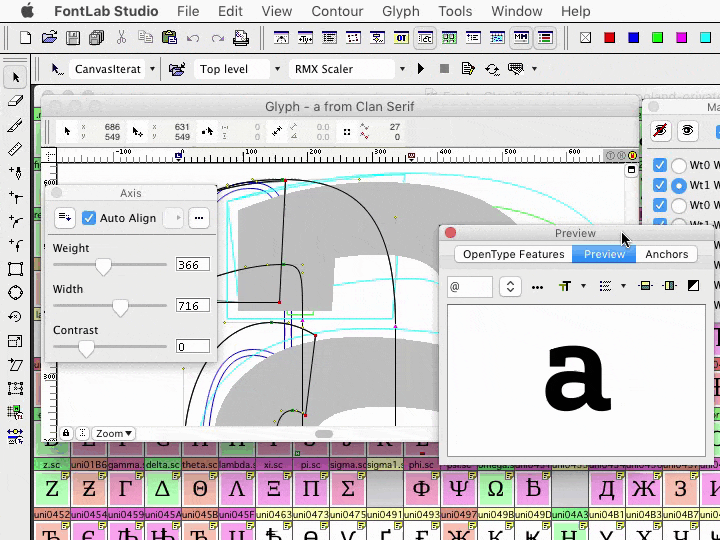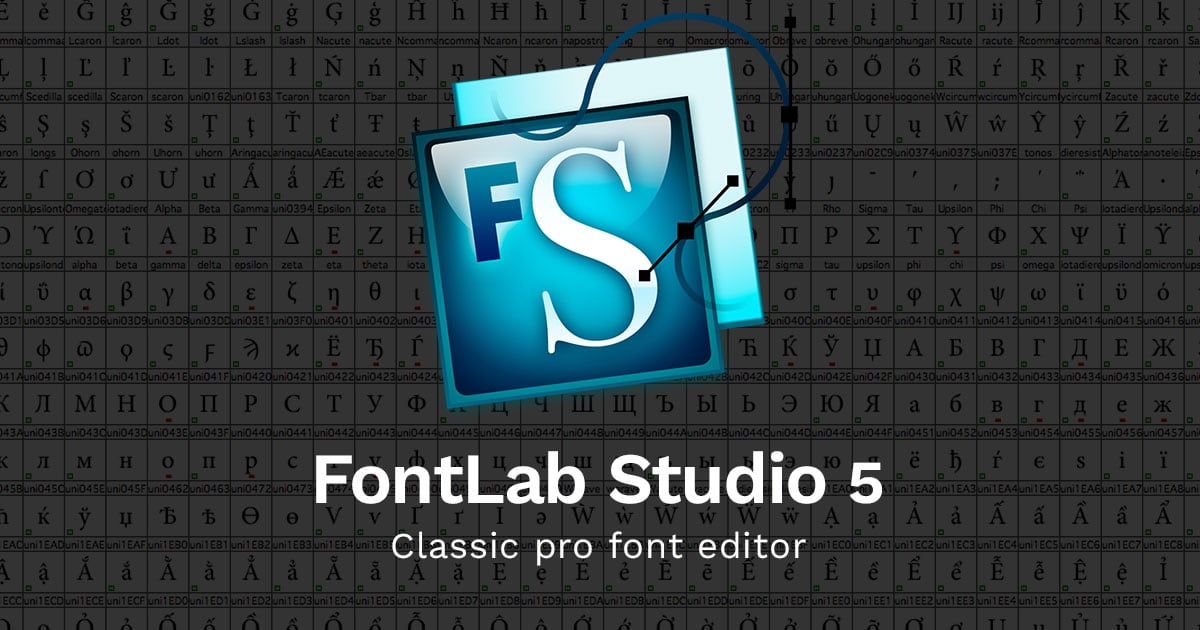
SoftUnion Ltd of Saint Petersburg, Russia, made the software, under lead programmer Yuri Yarmola. RoboFont can also be run from the command line.Originally, there were two separate companies. You can customise and expand the app, as RoboFont gives you control over your workflow down to the smallest details. It allows total customisation of its interface and structure so that users can create brand new, tailor-made solutions depending on the project at hand.


While Glyphs is pre-defined for almost anyone, RoboFont is a more flexible font editor written entirely in Python. As an extreme example, you can open up, modify and export an OTF font and preserve everything without the need for previous technical knowledge about fonts. It also lets you focus on the design process – you don't have to be aware of technicalities before drawing and exporting OpenType fonts in order to get everything right. Adding new functions is easy as the whole system is well-documented. Planning a whole font family? Crafting it is as easy as it gets using Multiply Masters. It can auto-generate OpenType-features even for complex scripts like Arabic. Glyphs has turned type design into an enjoyable process, with its integrated interface for drawing, spacing and kerning. Glyphs previews just some of the glyphs from FS Pimlico Black helps you draw new typefaces, modify existing fonts, and sculpt your letterforms hassle-free" – and it's bang on. Both Glyphs and RoboFont natively support the popular UFO format, whose acceptance is ever-growing.Īccording to its website, Glyphs is "the font editor for everyone. The latest versions are user-friendly, easy to learn and capable of producing high-quality fonts. Both apps are evolving and have a fast-growing, dedicated community of users and developers. While both projects looked exciting from the outset, many designers were initially reluctant to take them seriously, but those days are long gone. Glyphs and RoboFont, which can be considered the modern type designer's tools, are changing the face of type design. The desktop computer has liberated typography and made it accessible to everyone – for better and worse.

While both Fontographer and FontLab have proven to be really good tools, they have lain dormant while new tools have appeared and flourished, such as the more designer-friendly Glyphs App or the highly scalable RoboFont.
#Fontlab studio software#
Its interface looks more fun, the necessary tools are included and the font naming is easy (this being one of the toughest challenges for a beginner, so you'll praise any software that makes it any easier for you).įontLab Studio displays the 'Q' from FS Lola But stick with it if you definitely need that extended range of tools, and feel ready for the challenge.įontographer suits the needs of a novice type designer or a digital designer. Indeed, its steep learning curve can be disheartening. For a beginner, FontLab's interface may be confusing and look dated compared to modern apps. Its Multiply Master support is powerful but not intuitive, nor easy to set up.ĭespite these issues, FontLab is probably still the most used type design tool for font production (although that's probably about to change). Workflow can be automated with Python scripting (the type designer's favourite programming language) – you can access most of its internal objects via Python, but the lack of proper documentation can be daunting.
#Fontlab studio pro#
Just some of FontLab Studio's many menus on display, as Frank edits the 'Ç' glyph from FS Joey Pro
#Fontlab studio manual#
Using FontLab, you can fine-tune everything from OpenType features (advanced typographical features like small capitals) to manual TrueType hinting (for superb rendering on screen).

They are powerful enough to create robust, commercial-quality fonts and they run on OS X as well as on Windows. And while this isn't exactly true any more, they're still around because many individual designers and companies based their workflow on them. Fontographer and FontLabįontographer and FontLab were for a long time the de facto tools of type design. This will help you to make an informed decision that will affect your workflow and results before you even set out to create a font. So let's take a look at some major font editor tools available out there: FontLab Studio, Fontographer, Glyphs and RoboFont. I bet you suspect by now that you need something to make it all easy for you. You set information and data to make your font work consistently on all platforms, hint it to look good on your printed page and on screen, and finally export it to the appropriate file formats. The process of type design is a complex one. FS Lola ExtraBold, as seen in the RoboFont interface


 0 kommentar(er)
0 kommentar(er)
